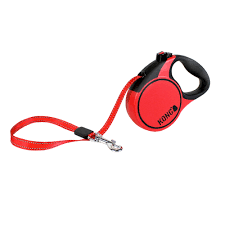The Delight of Soft Dog Treats
Soft dog treats are a favorite among many pet owners and their furry companions. These delectable snacks offer a variety of benefits that make them a popular choice for training, rewarding, or simply showing love to your four-legged friend.
Benefits of Soft Dog Treats:
- Palatability: Soft dog treats are often more appealing to dogs due to their chewy texture and rich flavors. This makes them an excellent option for picky eaters or dogs with dental issues.
- Training Aid: The soft and easily chewable nature of these treats makes them ideal for training sessions. Dogs quickly learn to associate good behavior with the tasty reward, making training more effective and enjoyable for both pet and owner.
- Digestibility: Unlike hard treats that can be difficult for some dogs to digest, soft dog treats are gentle on the stomach and suitable for dogs of all ages, including puppies and seniors.
- Versatility: Soft dog treats come in a wide range of flavors, shapes, and sizes, allowing you to choose the perfect treat for your dog’s preferences and dietary needs.
Popular Flavors of Soft Dog Treats:
From savory chicken and beef to sweet potato and peanut butter, soft dog treats come in an array of tempting flavors that are sure to please your pup’s taste buds. Some brands even offer grain-free or hypoallergenic options for dogs with specific dietary requirements.
In Conclusion
Whether you’re looking to train your dog, reward good behavior, or simply share a moment of joy together, soft dog treats are a wonderful choice that both you and your furry companion will appreciate. With their delicious taste and numerous benefits, these treats are sure to become a staple in your pantry!
9 Frequently Asked Questions About Soft Dog Treats: A Guide for Pet Owners
- 1. What are soft dog treats?
- 2. Are soft dog treats suitable for all dog breeds?
- 3. How often can I give my dog soft treats?
- 4. Do soft dog treats help with training?
- 5. Are there any health benefits to feeding my dog soft treats?
- 6. Can puppies eat soft dog treats?
- 7. What ingredients should I look for in quality soft dog treats?
- 8. Are there any flavors that are particularly popular among dogs in soft treats?
- 9. How should I store soft dog treats to keep them fresh?
1. What are soft dog treats?
Soft dog treats are delicious and chewy snacks specially designed for our canine companions. Unlike traditional hard treats, soft dog treats have a tender texture that makes them easy to chew and digest, making them suitable for dogs of all ages. These treats come in a variety of flavors and shapes, offering pet owners a wide selection to choose from based on their dog’s preferences and dietary needs. Whether used for training, rewarding good behavior, or simply as a tasty snack, soft dog treats are a popular choice among pet owners looking to show their furry friends some love.
2. Are soft dog treats suitable for all dog breeds?
Soft dog treats are generally suitable for all dog breeds, but it’s important to consider individual factors such as size, age, and dietary restrictions when choosing treats for your furry friend. While most dogs enjoy and can safely consume soft treats, some breeds may have specific needs or preferences that require a tailored approach to treat selection. Consulting with your veterinarian can help ensure that the soft dog treats you choose are appropriate for your dog’s breed and overall health.
3. How often can I give my dog soft treats?
When it comes to giving your dog soft treats, the frequency of indulgence should be balanced to maintain a healthy diet. While soft treats can be a tasty reward for your furry friend, it is important to consider their overall daily caloric intake and nutritional needs. As a general guideline, soft treats should be given in moderation, alongside your dog’s regular meals and taking into account any other treats or snacks they may receive throughout the day. Consulting with your veterinarian can help determine the appropriate frequency of offering soft treats based on your dog’s size, age, activity level, and dietary requirements.
4. Do soft dog treats help with training?
Soft dog treats are highly effective tools for training due to their chewy texture and enticing flavors. The softness of these treats makes them easy for dogs to consume quickly, allowing for immediate reinforcement of positive behavior during training sessions. Dogs are motivated by the delicious taste of soft treats, making them eager to learn and follow commands in exchange for a tasty reward. Their palatability and digestibility make soft dog treats a popular choice among pet owners looking to enhance the training experience and strengthen the bond with their furry companions.
5. Are there any health benefits to feeding my dog soft treats?
Soft dog treats can offer health benefits beyond just being a tasty snack for your furry friend. Many soft treats are formulated with wholesome ingredients that can provide additional nutrition to support your dog’s well-being. Some soft treats contain vitamins, minerals, and other supplements that can aid in digestion, promote healthy skin and coat, or support joint health. When choosing soft treats for your dog, look for options that are tailored to address specific health concerns or dietary needs to ensure your pup receives both a delicious treat and added nutritional value.
6. Can puppies eat soft dog treats?
Puppies can indeed enjoy soft dog treats, but it’s essential to choose treats specifically formulated for their age and size. Soft treats designed for puppies are typically gentler on their developing teeth and digestive systems. These treats often contain ingredients that cater to a puppy’s nutritional needs, helping them grow strong and healthy. Always check the packaging to ensure that the soft dog treats are suitable for puppies, and consider consulting your veterinarian for personalized recommendations based on your puppy’s breed and age.
7. What ingredients should I look for in quality soft dog treats?
When searching for quality soft dog treats, it is essential to pay attention to the ingredients listed on the packaging. Look for treats that contain high-quality proteins such as real meat or fish as the first ingredient, ensuring your dog receives essential nutrients. Opt for treats with natural ingredients and avoid artificial additives, colors, and preservatives. Additionally, consider treats that are grain-free or hypoallergenic if your dog has specific dietary needs. By choosing soft dog treats with wholesome ingredients, you can provide your furry friend with a nutritious and delicious snack they will love.
8. Are there any flavors that are particularly popular among dogs in soft treats?
When it comes to soft dog treats, there are several flavors that tend to be especially popular among our canine companions. Some of the top choices include savory options like chicken, beef, and turkey, which appeal to dogs’ natural carnivorous instincts. Additionally, many dogs have a sweet tooth for flavors like peanut butter, sweet potato, and cheese. These enticing flavors not only make the treats more enjoyable for dogs but also add variety to their snacking experience. Remember to consider your dog’s preferences and any dietary restrictions when selecting the perfect soft treat flavor for your furry friend!
9. How should I store soft dog treats to keep them fresh?
To keep soft dog treats fresh and tasty for your furry friend, it is important to store them properly. It is recommended to store soft dog treats in an airtight container or resealable bag to prevent exposure to air and moisture, which can cause them to become stale or moldy. Additionally, storing the treats in a cool, dry place away from direct sunlight can help maintain their freshness for a longer period. By following these simple storage tips, you can ensure that your soft dog treats remain delicious and enjoyable for your pup to savor.



